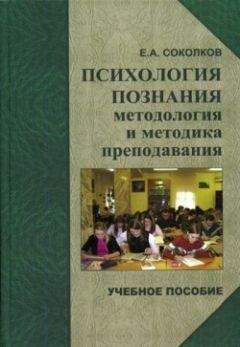Murphy, S.T., Zajonc, R.B. (1993). Affect, cognition and awareness. Journal of Personality and Social Psychology, 64,723–739.
Murray, D.A., Leupker, R.V., Johnson, C.A., Mittlemark, M.B. (1984). The prevention of cigarette smoking in children: A comparison of four strategies. Journal of Applied Social Psychology, 14,274–288.
Naylor, R.W., Raghunathan, R., Ramanathan, S. (2006). Promotions spontaneously induce a positive evaluative response. Journal of Consumer Psychology, 16,295–305.
Newcomb, T. (1953). An approach to the study of communicative acts. Psychological Review, 60,393–404.
News. (1988). Stanford Business School Magazine, 56,3.
Nosanchuk, T.A., Lightstone, J. (1974). Canned laughter and public and private conformity.Journal of Personality and Social Psychology, 29, 153–156.
O’Connor, R.D. (1972). Relative efficacy of modeling, shaping, and the combined procedures for modification of social withdrawal. Journal of Abnormal Psychology,79, 327–334.
O’Leary, S.G. (1995). Parental discipline mistakes. Current Directions in Psychological Science, 4,11–13.
Olsen, I.R., Marshuetz, C. (2005). Facial attractiveness is appraised in a glance. Emotion,5, 498–502.
Olson, J.C. (1977). Price as an informational cue: Effects of product evaluations. In A.G. Woodside, J.N. Sheth & P.D. Bennett (Eds.), Consumer and industrial buying behavior.New York: North-Holland.
Oskamp, S., Schultz, P.W. (1998). Applied Social Psychology.Englewood Cliffs, NJ: Prentice-Hall.
Overload of advice likely misled FBI (1993, October 8). Arizona Republic,p. A13.
Packard, V. (1957). The hidden persuaders.New York: D. McKay Co.
Paese, P.W., Gilin, D.A. (2000). When an adversary is caught telling the truth. Personality andSocial Psychology Bulletin, 26,75–90.
Pallak, M.S., Cook, D.A., Sullivan, J.J. (1980). Commitment and energy conservation. Applied Social Psychology Annual, 1,235–253.
Paolini, S., Hewstone, M., Cairns, E., Voci, A. (2004). Effects of direct and indirect cross-group friendships on judgments of Catholics and Protestants in Northern Ireland. Personality and Social Psychology Bulletin, 30,770–786.
Pardini, A., Katzev, R. (1983–1984). The effect of strength of commitment on newspaper recycling.Journal of Environmental Systems, 13, 245–254.
Parks, C.D., Sanna, L.J., Berel, S.R. (2001). Actions of similar others as inducements to cooperate in social dilemmas. Personality and Social Psychology Bulletin, 27, 345–354.
Paulhus, D.L., Martin, C. L, Murphy, G.K. (1992). Some effects of arousal sex stereotyping.Personality and Social Psychology Bulletin, 18,325–330.
Peiponen, V.A. (i960). Verhaltensstudien am blaukehlchen [Behavior studies of the blue-throat].Ornis Fennica,37, 69–83.
Petrova, P. K, Cialdini, R.B., Sills, S.J. (2007). Personal consistency and compliance across cultures. Journal of Experimental Social Psychology, 43,104–111.
Petty, R.E., Cacioppo, J.T., Goldman, R. (1981). Personal involvement as a determinant of argument-based persuasion. Journal of Personality and Social Psychology, 41,847–855.
Petty, R.E., Wegener, D.T. (1999). The elaboration likelihood model: Current status and controversies. In S. Chaiken &Y. Trope (Eds.), Dual-process theories in social psychology(pp. 41–72). New York: Guilford.
Phalen, C.W., Chairperson. (1951). [Panel discussion of N.I.C. Public Relations Committee].Yearbook.New York: National Interfraternity Conference.
Phillips, D.P. (1974). The influence of suggestion on suicide: Substantive and theoretical implications of the Werther effect. American Sociological Review, 39,340–354.
Phillips, D.P. (1979). Suicide, motor vehicle fatalities, and the mass media: Evidence toward a theory of suggestion. American Journal of Sociology, 84,1150–1174.
Phillips, D.P. (1980). Airplane accidents, murder, and the mass media: Towards a theory of imitation and suggestion. Social Forces, 58, 1001–1024.
Phillips, D.P. (1983). The impact of mass media violence on U.S. homicides. American Sociological Review, 48,560–568.
Phillips, D.P., Cartensen, L.L. (1986). Clustering of teenage suicides after television news stories about suicide. The New England Journal of Medicine, 315, 685–689.
Phillips, D.P., Cartensen, L.L. (1988). The effect of suicide stories on various demographic groups, 1968–1985. Suicide and Life-Threatening Behavior, 18,100–114.
Plassmann, H., O’Doherty, J., Shiv, B., Rangel, A. (2008). Marketing actions can modulate neural representations of experienced pleasantness. Proceedings of the National Academy of Sciences, 105, 1050–1054.
Platow, M.J., Haslam, S.A., Both, B., Chew, I., Cuddon, M., Goharpey, N., Maurer, J., Rosini, S., Tsekouras, A., Grace, D.M. (2005). «It’s not funny if they’relaughing»: Self-categorization, social influence, and responses to canned laughter. Journal of Experimental Social Psychology, 41,542–550.
Pratkanis, A. &Shadel, D. (2005). Weapons of fraud: A sourcebook for fraud fighters. Seattle, WA: AARP Washington.
Provine, R. (2000). Laughter: A scientific investigation.New York: Viking.
Rao, A.R., Monroe, K.B. (1989). The effect of price, brand name, and store name on buyer’s perceptions of product quality. Journal of Marketing Research, 26,351–357.
Razran, G.H. S. (1938). Conditioning away social bias by the luncheon technique. Psychological Bulletin, 35, 693.
Razran, G.H. S. (1940). Conditional response changes in rating and appraising sociopolitical slogans. Psychological Bulletin, 37, 481.
Regan, D.T., Kilduff, M. (1988). Optimism about elections: Dissonance reduction at the ballot box.Political Psychology, 9,101–107.
Regan, R.T. (1971). Effects of a favor and liking on compliance. Journal of Experimental Social Psychology, 7, 627–639.
Richeson, J.A., Shelton, J.N. (2007). Negotiating interracial interactions. Current Directions in Psychological Science, 16,316–320.
Ridley, M. (1997). The origin of virtue: Human instincts and the evolution of cooperation.London: Penguin Books.
Riley, D., Eckenrode, J. (1986). Social ties: Subgroup differences in costs and benefits. Journal of Personality and Social Psychology, 51,770–778.
Ritts V., Patterson, M.L., Tubbs, M.E. (1992). Expectations, impressions, and judgments of physically attractive students: A review. Review of Educational Research, 62,413–426.
Roadside Victim Emails (2004, September 29). http://www.sky.com/skynews/article/ _3Oioo-ii53482,oo.html.
Rosen, S., Tesser, A. (1970). On the reluctance to communicate undesirable information: The MUM effect. Sociometry, 33,253–263.
Rosenfield, D., Stephan, W.G. (1981). Intergroup relations among children. In S. Brehm, S. Kassin & F. Gibbons (Eds.), Developmental social psychology.New York: Oxford University Press.
Rosenthal, A.M. (1964). Thirty-eight witnesses.New York: McGraw-Hill.
Ross, A.S. (1971). Effects of increased responsibility on bystander intervention: The presence of children. Journal of Personality and Social Psychology,19, 306–310.
Rothman, A.J., Salovey, P. (1997). Shaping perceptions to motivate healthy behavior: The role of message framing. Psychological Bulletin, 121,3–19.
Rothman, A.J., Martino, S.C., Bedell, B.T., Detweiler, J.B., Salovey, P. (1999). The systematic influence of gain- and loss-framed messages on interest in and use of different types of health behavior. Personality and Social Psychology Bulletin, 25, 1355–1369.
Ruback, B.R., Juieng, D. (1997). Territorial defense in parking lots: Retaliation against waiting drivers. Journal of Applied Social Psychology, 27, 821–834.
Rubinstein, S. (1985, January 30). What they teach used car salesmen. San Francisco Chronicle.
Ruiz R., Glenn, M., Crowe, R. (2007, April 24). Apartment resident kills manager, self.http://www.chron.com/disp/story.mpl/fron/4741970.html.
Rusbult, C.E., Van Lange, P.A. M., Wildschut, T., Yovetich, N.A., Verette, J. (2000). Perceived superiority in close relationships: Why it exists and persists. Journal of Personality and Social Psychology, 79, 521–545.
Russo, J.E., Carlson, K.A., Meloy, M.G. (2006). Choosing an inferior alternative. Psychological Science, 17, 899–904.
Salant, J.D. (2003, July 20). Study links donations, vote patterns. The Arizona Republic,A5.
Scammon, D.L. (1977). Information overload and consumers. Journal of Consumer Research, 4,148–155.
Schein, E. (1956). The Chinese indoctrination program for prisoners of war: A study of attempted «brainwashing.» Psychiatry, 19,149–172.
Schindler, R.M. (1998). Consequences of perceiving oneself as responsible for obtaining a discount. Journal of Consumer Psychology, 7, 371–392.
Schlenker, B.R., Dlugolecki, D.W., Doherty, K. (1994). The impact of self-presentations on self-appraisals and behavior. The power of public commitment. Personality and Social Psychology Bulletin, 20,20–33.
Schmidtke, A., Hafner, H. (1988). The Werther effect after television films: New evidence for an old hypothesis. Psychological Medicine, 18,665–676.
Schultz, P.W. (1999). Changing behavior with normative feedback interventions: A field experiment on curbside recycling. Basic and Applied Social Psychology, 21,25–36.
Schwartzwald, D., Raz, M., Zwibel, M. (1979). The applicability of the door-in-the-face technique when established behavior customs exit. Journal of Applied Social Psycholgy, 9, 576–586.
Schwarz, N. (1984). When reactance effects persist despite restoration of freedom: Investigations of time delay and vicarious control. European Journal of Social Psychology, 14,405–419.
Sechrist, G.B., Stangor, C. (2007). When are intergroup attitudes based on perceived consensus information? The role of group familiarity. Social Influence, 2,211–235.
Segal, H.A. (1954). Initial psychiatric findings of recently repatriated prisoners of war. American Journal of Psychiatry, III,358–363.
Sengupta, J., Johar, G.V. (2001). Contingent effects of anxiety on message elaboration and persuasion. Personality and Social Psychology Bulletin, 27, 139–150.
Settle, R.B., Gordon, L.L. (1974). Attribution theory and advertiser credibility. Journal of Marketing Research, 11,181–185.
Sheldon, K.M., Ryan, R.M., Rawsthorne, L.J., Ilardi, B. (1997). Trait self and true self, Journal of Personality and Social Psychology, 73, 1380–1393.
Shelley, M.K. (1994). Individual differences in lottery evaluation models. Organizational Behavior and Human Decision Processes, 60, 206–230.
Shepperd, J.A., Strathman, A.J. (1989). Attractiveness and height. Personality and Social Psychology Bulletin, 15, 617–627.
Sherif, M., Harvey, O.J., White, B.J., Hood, W.R., Sherif, C.W. (1961). Intergroup conflict and cooperation: The Robbers’ Cave experiment.Norman, OK: University of Oklahoma Institute of Intergroup Relations.
Sherman, S.J. (1980). On the self-erasing nature of errors of prediction. Journal of Personality and Social Psychology, 39, 211–221.
Singer, E., Van Hoewyk, J., Maher, M.P. (2000). Experiments with incentives in telephone surveys. Public Opinion Quarterly, 64,171–188.
Slavin, R.E. (1983). When does cooperative learning increase student achievement? Psychological Bulletin, 94,429–445.
Smith, G.H., Engel, R. (1968). Influence of a female model on perceived characteristics of an automobile. Proceedings of the j6th Annual Convention of the American Psychological Association, 3, 681–682.
Smith, P.B., Bond, M.H., Kagitcibasi, C. (2006). Understanding social psychology across cultures.Thousand Oaks, CA: Sage.
Spangenberg, E.R., Greenwald, A.G. (2001). Self-prophesy as a method for increasing participation in socially desirable behaviors. In W. Wosinska, R.B. Cialdini, D.W. Barrett, and J. Reykowski (Eds.), The practice of social influence in multiple cultures.Mah-wah, NJ: Lawrence Erlbaum.
Stangor, C., Sechrist, G.B., Jost, J.T. (2001). Changing racial beliefs by providing consensus information. Personality and Social Psychology Bulletin, 27, 486–496.
Stanne, M.B., Johnson, D.W., Johnson, R.T. (1999). Does competition enhance or inhibit motor performance: A meta-analysis. Psychological Bulletin, 125, 133–154.
Stelfox, H.T., Chua, G., O’Rourke, K., Detsky, A.S. (1998). Conflict of interest in the debate over calcium-channel antagonists. New England Journal of Medicine, 333,101–106.
Stephan, W.G. (1978). School desegregation: An evaluation of predictions made in Brown vs. Board of Education. Psychological Bulletin, 85, 217–238.
Stewart, J.E., II. (1980). Defendant’s attractiveness as a factor in the outcome of trials. Journal of Applied Social Psychology, 10,348–361.
Strohmetz, D.B., Rind, B., Fisher, R., Lynn, M. (2002). Sweetening the till — the use of candy to increase restaurant tipping. Journal of Applied Social Psychology, 32,300–309.
Styron, W. (1977). A farewell to arms. New York Review of Books, 24,3–4.
Suedfeld, P., Bochner, S., Matas, C. (1971). Petitioner’s attire and petition signing by peace demonstrators: A field experiment. Journal of Applied Social Psychology, 1,278–283.
Surowiecki, J. (2004). The wisdom of crowds.New York: Doubleday.
Swap, W.C. (1977). Interpersonal attraction and repeated exposure to rewards and punishers.Personality and Social Psychology Bulletin, 3, 248–251.





